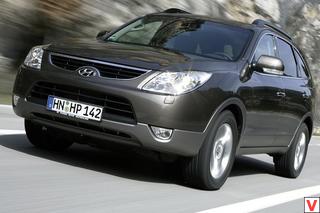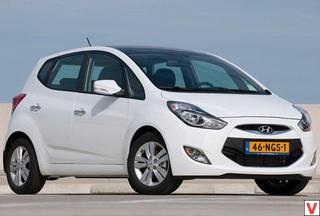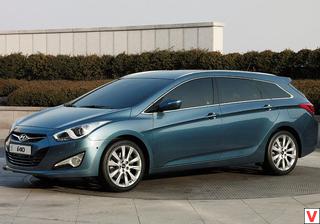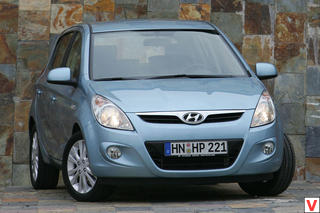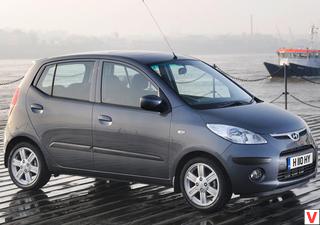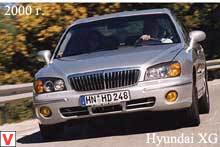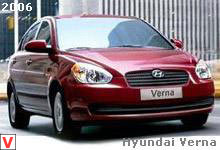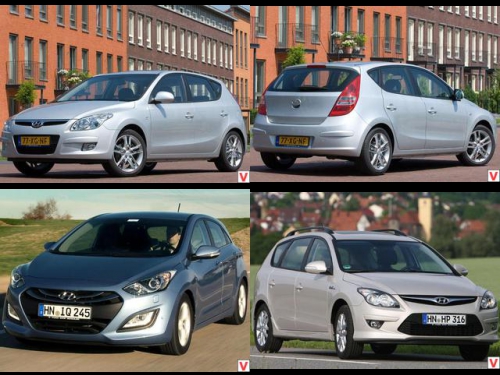
Debut Hyundai i30 was held in 2007. First came the 5-door hatchback, followed by the wagon. The appearance of this model was preceded by as many as two concept cars - Genus and Arnejs. The car was developed at the Hyundai Design and Technical Center in Rüsselsheim (Germany) specifically for the European market and taking into account the preferences of its consumers. The i30 was the first model of Hyundai Motor, in which the alphanumeric designation principle of cars is applied. Now Koreans refer to their cars based on a simple rule: the letter i in the model name comes from the first letter of the English word Inspiration, which means “inspiration”.
This word is part of Hyundai's slogan, which sounds like this: “Quality. Security. Inspiration". Number - the car belongs to a particular class. The higher it is, the bigger and more solid is the brand of the car (i10 is class A, i20 is B, i30 is C, i40 is D, i50 is E).
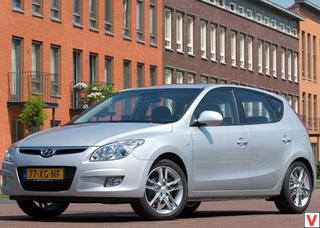
Universals will receive the designation CW (Cross Wagon). Hyundai i30 was developed on the basis of the model Elantra J3. The design is designed in a dynamic style: a convex silhouette of the back of the body, rounded hood lines, a compact roof spoiler. Clearly marked body waistline complements classic proportions. The prominent dual grille blends in harmoniously with the hood and with the front pillar lines. Expressive headlamps and large ruby rear lights complete the picture.
In terms of dimensions, the i30 is almost as good as its classmates (length is 4245 mm, width is 1765 mm, height is 1480), but it exceeds them in wheelbase - 2.65 m. Thanks to the long wheelbase, the car is more stable in acceleration due to less weight redistribution and more predictable in turns. Salon pleases good ergonomics, adjustable steering wheel height and angle, comfortable anatomical seats and a beautiful blue LED backlight dashboard. All elements are optimally located. The dials of the dashboard are equipped with fault warning lights: it looks very expensive and perfectly decorates the interior. This technology is used in all Hyundai premium cars.
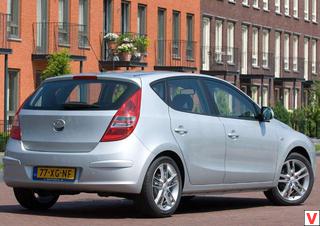
The two-tone interior trim trimmed with fabric and other materials gives the refined interior a volume and a special charm. A practical trunk with a length of 820 mm, a width of 1020 mm and a height of 558 mm provides an impressive cargo volume of 340 liters, even with vertically raised rear seat backs. If necessary, the rear seat can be folded in the ratio of 60:40, increasing the amount of luggage from 340 to 1250 liters.
At the buyer's request, the car can be equipped with leather interior, climate control, sunroof, stabilization system, audio system with linear input and the ability to play music in mp3 format, parking sensors, rain sensors and 17-inch wheels. Starting with the complete set of Comfort, an optional navigation system is installed. A variety of complete sets and a wide choice of additional options allows to satisfy the needs of even the most demanding customers. A wide range of engines is available for the Hyundai i30: three petrol and three diesel in combination with a manual or automatic transmission.
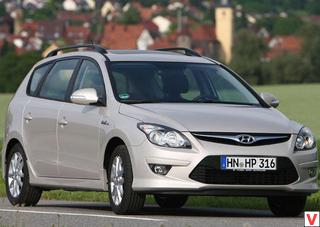
The i30 five-speed, fully synchronized transmission has been specifically designed to give the car a sporty character. All gasoline engines 16 valve and have a system of variable valve timing. The 1.4-liter petrol engine with 105 hp installed on the base version of the i30 combines fuel efficiency and good performance, developing torque up to 137 Nm. The new 1.6-liter engine reaches 115 hp. and torque of 154 Nm, while a similar unit volume of 2.0 liters - respectively 143 hp and 186 Nm.
In the category of diesel engines: 1.6 liter CRDi 90 hp with a torque of 235 Nm and 115 hp with a torque of 255 Nm. The most powerful version received a 2.0-liter CRDi engine with a power of 140 hp. and a torque of 304 Nm.
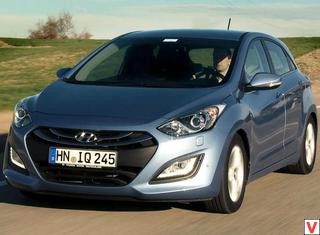
All engines have variable turbo-injection geometry (VGT), a low-friction equalizer shaft and high-pressure diesel injection system. In accordance with the requirements for environmental protection on a model i30 with all types of diesel engines installed DPF (Diesel Particulate Filter - filter to trap soot from exhaust gases). It is assumed that diesel engines will not be delivered to Russia, at least for now. Hyundai i30 is equipped with active and passive safety systems. The car has two front, side airbags and curtain airbags, active head restraints, seat belt pretensioners and devices that warn passengers about the need to wear seat belts.
In the car body there are deformation zones and three-sided load distribution. The model is equipped with a McPherson front suspension and a multi-link rear suspension. Ventilated 10-inch front wheels and 9-inch rear wheels with four-channel ABS and optional ESP (except for the Premium model, where it is a standard component) provide excellent handling on the road. Sports, but not aggressive appearance, guaranteed quality and safety, a wide range of engines, a rich equipment and a large set of various additional options are the main competitive advantages of this model. By the way, the car is produced at a factory in the Czech Republic.
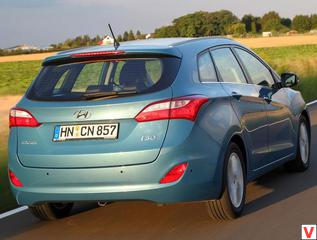
The official premiere of the second generation took place in the fall of 2011 in Frankfurt. When changing the generation of the car grew in length and width, received a new appearance in a modern corporate style. And in addition - a very good equipment and a good selection of engines. Gasoline engine 1.6 Gamma GDI with direct injection capacity of 135 hp at 6300 rpm and torque 164 Nm at 4850 rev / min. The motor complies with Euro-5 standards. The GDI engine will not be supplied to Russia, nor will the three diesel versions from the i30 range.
Two petrol units will go to the Russian market more simply: Gamma 1.4 (100 hp) and Gamma 1,6 MPI (130 hp) with conventional injection, meeting the Euro-4 standards. Transmission: 6-speed manual transmission, manual or automatic (only for the 1.6 l version). The new "automatic" is more agile than the old archaic 4-speed and provides the best acceleration dynamics. Good handling contributes to the suspension. Hyundai i30 is made on the Elantra platform, but instead of a beam behind it - an independent multi-lever. And in front - McPherson. Plus, ABS, ESP electronic stabilization system, VSM stability control system and hill start assistant.
In the new car, there was a little more legroom on the first row, but on the second it was cut by six centimeters. However, sitting back, do not rest your knees: thanks to the slightly different position of the seats (it was changed so that the roof, which became lower, did not “press” on the heads of the passengers).
